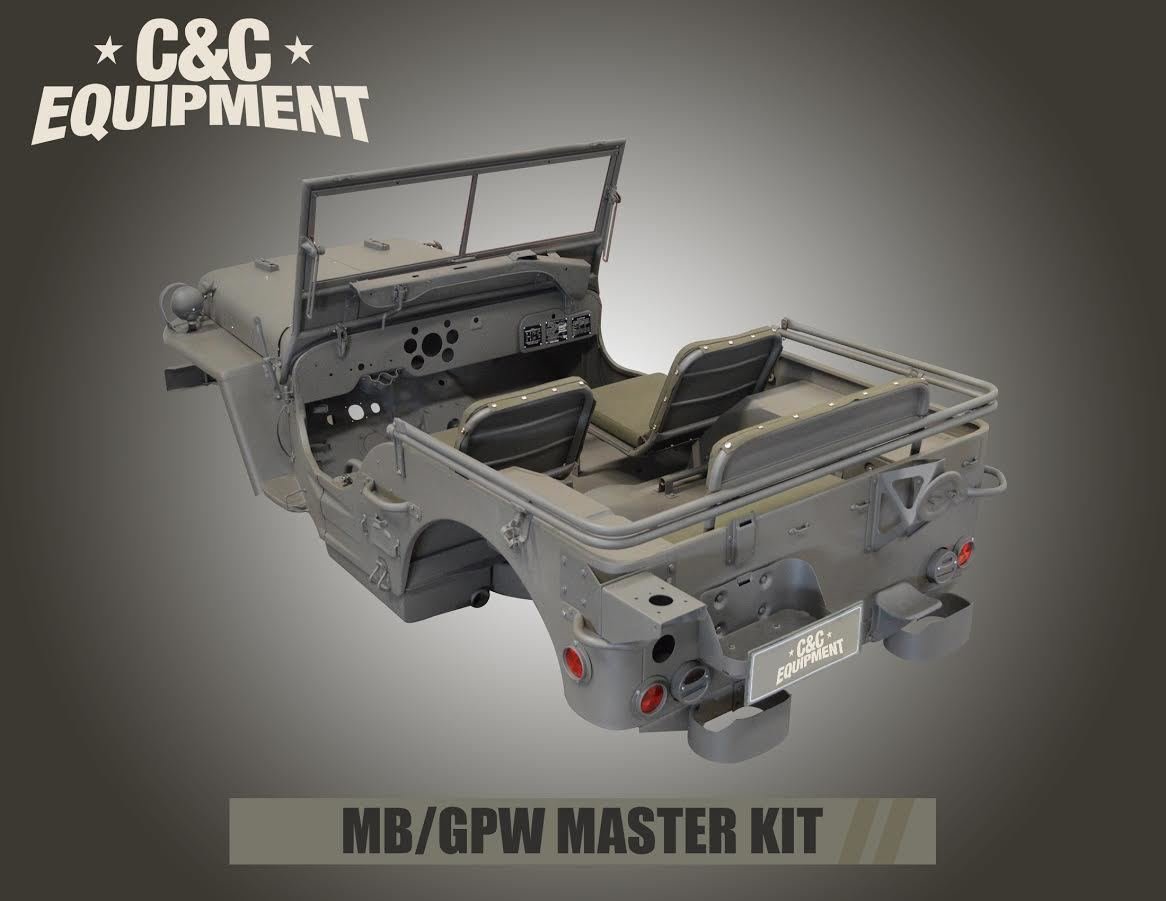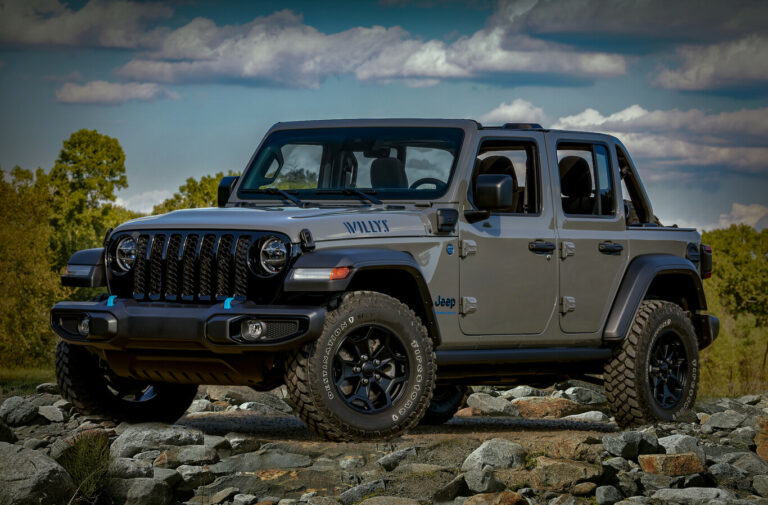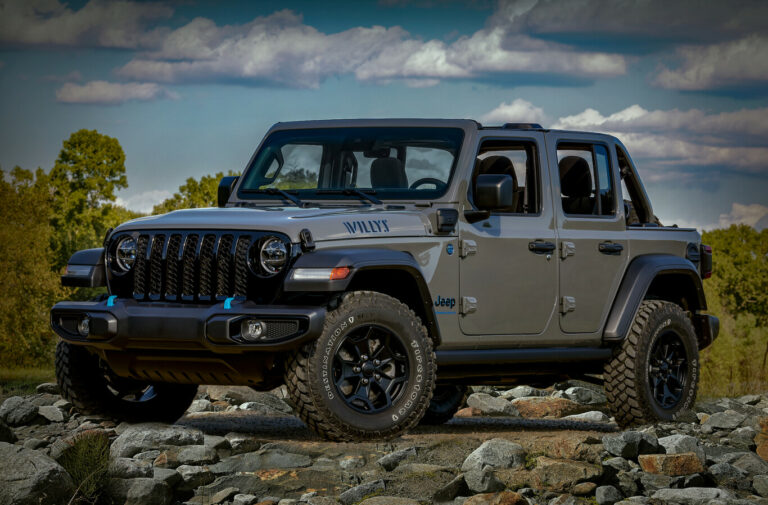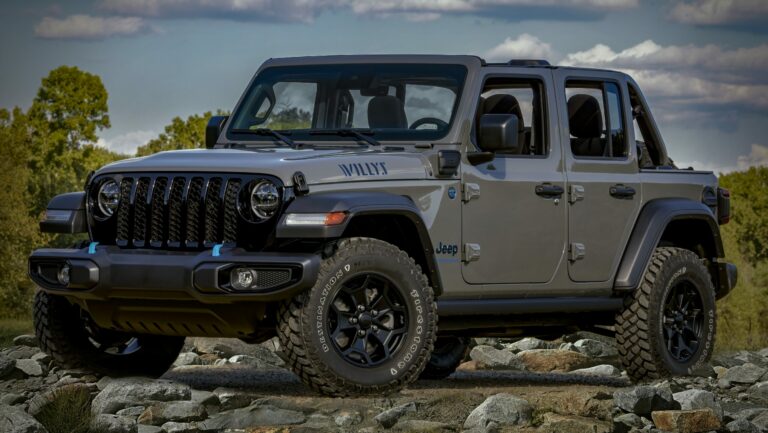Willys Jeep Tub For Sale: Your Essential Guide to Restoring an Icon
Willys Jeep Tub For Sale: Your Essential Guide to Restoring an Icon jeeps.truckstrend.com
The Willys Jeep – an undeniable symbol of American ingenuity, ruggedness, and post-war freedom. From its humble beginnings on the battlefields of World War II as the MB to its civilian reincarnation as the CJ series, the Willys Jeep has captured the hearts of enthusiasts worldwide. For many, owning or restoring one of these iconic vehicles is a passion project, a journey into automotive history. At the heart of any such restoration lies a critical component: the Willys Jeep tub.
But what exactly is a Willys Jeep tub, and why is it so often "for sale"? Simply put, the tub is the main body shell of the Jeep – the passenger compartment, floor, firewall, and rear cargo area, essentially everything above the frame and below the windshield. Over decades of use, exposure to the elements, and often neglect, original Willys tubs frequently succumb to rust, rot, and structural damage. This makes finding a suitable replacement tub a cornerstone of almost any Willys restoration or custom build project. Whether you’re aiming for a historically accurate museum piece, a weekend trail warrior, or a unique custom hot rod, understanding the market for Willys Jeep tubs is paramount. This comprehensive guide will navigate you through everything you need to know about finding, evaluating, and acquiring the perfect tub for your Willys dream.
Willys Jeep Tub For Sale: Your Essential Guide to Restoring an Icon
Understanding the Willys Jeep Tub: The Core of Your Project
The Willys Jeep tub is more than just a piece of sheet metal; it’s the defining characteristic of the vehicle’s appearance and the anchor for its interior components. Unlike modern unibody vehicles, the Willys Jeep features a separate body-on-frame construction, making the tub a distinct, replaceable unit.
Historical Context and Tub Variations:
While often generically referred to as "Willys Jeep tubs," there are subtle but important differences across the various models:
- Willys MB (WWII Military): The original. Known for its distinct flat fenders, recessed headlights, and military-specific features.
- Willys CJ-2A ("AgriJeep"): The first civilian model. Shares much with the MB but introduced a tailgate, side-mounted spare tire, and civilian lighting.
- Willys CJ-3A ("Farm Jeep"): An evolution of the CJ-2A, featuring a one-piece windshield and minor body changes.
- Willys CJ-3B ("High Hood"): Distinguished by its taller hood to accommodate the F-head engine, requiring a higher cowl and slight tub modifications at the front.

Each of these models has specific nuances in their tub design, from fender mounting points to firewall contours and tailgate openings. While some parts are interchangeable, a purist or someone aiming for a precise restoration will seek a tub specific to their model or be prepared for minor modifications.
Why are Tubs for Sale?
The primary reason tubs are frequently on the market is the widespread issue of rust. Willys Jeeps were built tough, but decades of exposure to moisture, road salt, and harsh conditions often lead to severe corrosion, particularly in:
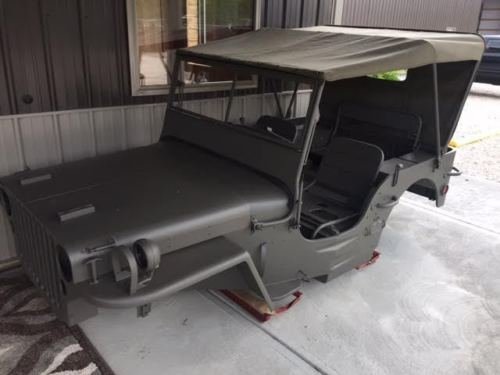
- Floor pans
- Hat channels (structural supports beneath the floor)
- Toolboxes (under the seats)
- Rear cross member
- Lower body panels and wheel wells
- Firewall and cowl areas
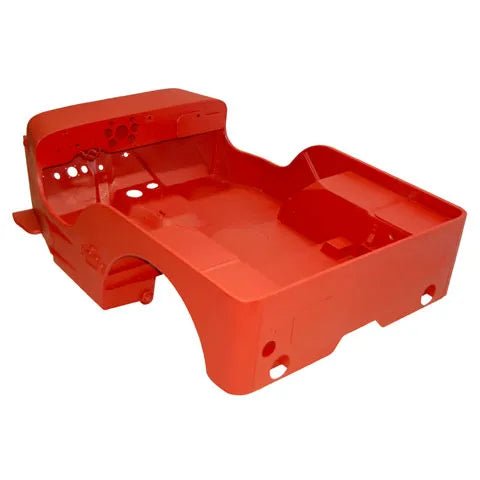
When rust becomes extensive, repairing the original tub can be more costly and time-consuming than replacing it with a new reproduction or a better-condition used unit. Furthermore, some enthusiasts buy tubs for custom projects, transforming them into unique vehicles that retain the iconic Willys silhouette.
Types of Willys Jeep Tubs Available
When searching for a Willys Jeep tub, you’ll generally encounter two main categories, each with its own set of advantages and disadvantages:
-
Original / Used Tubs:
- Pros: Unquestionable authenticity, potential for original patina (if desired), and sometimes lower initial cost.
- Cons: Almost always come with rust and damage, requiring significant bodywork, welding, and often panel replacement. Hidden rust can be a major challenge. Finding a truly "rust-free" original is exceedingly rare and commands premium prices.
- Where to Find: Salvage yards, private sellers, online auction sites (eBay), specialized Jeep forums, and classic car swap meets.
-
Reproduction / New Tubs:
- Pros: Rust-free, made from new steel, often thicker gauge than original for improved durability, ready for bodywork prep and paint. Eliminates the extensive, costly, and time-consuming rust repair associated with used tubs.
- Cons: Higher initial purchase price, some purists debate "authenticity," and minor fitment issues can occasionally arise depending on the manufacturer and the specific frame you’re using.
- Manufacturers: Several companies produce reproduction Willys tubs, with MD Juan Enterprises (Philippines) being a prominent name known for steel tubs for MB, CJ-2A, and CJ-3A. Other companies like Omix-ADA also offer components or full tubs.
- Material Options: While most new tubs are steel, some niche fabricators might offer fiberglass tubs. Fiberglass is lighter and rust-proof, but has a different feel, can be harder to repair if damaged, and lacks the structural rigidity of steel. For a true Willys restoration, steel is almost always preferred.
Key Considerations When Buying Your Tub
Purchasing a Willys Jeep tub is a significant investment in your project. Careful consideration before buying can save you headaches and money down the line.
- Model Specificity: Ensure the tub is for your exact Willys model (MB, CJ-2A, CJ-3A, CJ-3B). While some cross-compatibility exists, differences in firewall, cowl, and mounting points can lead to frustrating fitment issues.
- Condition (for Used Tubs):
- Rust: This is the biggest enemy. Inspect thoroughly, especially in the common areas mentioned above. Use a magnet to detect body filler over rust. Probe with a screwdriver if possible (with seller’s permission).
- Dents & Damage: Assess the extent of body damage. Minor dents are fixable; major structural damage might make the tub not worth saving.
- Previous Repairs: Look for shoddy patch jobs or excessive body filler. A poorly repaired tub can be more problematic than a rusty one.
- Completeness: Does it include the firewall, inner fenders, hat channels, and rear cross member? Some tubs are "bare shells," requiring more components.
- Manufacturer (for New Tubs): Research the reputation of the reproduction tub manufacturer. Read reviews, check forums for feedback on fitment accuracy, steel gauge, and overall quality. A good manufacturer strives for historical accuracy and uses robust materials.
- Material (Steel vs. Fiberglass): For most restorations, steel is the preferred choice for its authenticity, durability, and ease of traditional bodywork. Fiberglass is a niche choice for specific custom builds where weight or rust prevention is paramount, but it alters the original character.
- Shipping & Logistics: Tubs are large and heavy, making shipping a significant cost factor. Factor in freight charges, which can often run into hundreds or even thousands of dollars depending on distance. Local pickup can save a fortune. Ensure the seller is experienced in crating and shipping such an item securely.
- Budget: Set a realistic budget. A cheap tub often means extensive repair costs. A quality reproduction tub is a larger upfront cost but saves immensely on labor for rust repair.
- Paperwork (for Tubs with VINs): While the VIN is typically on the frame, some very early tubs might have markings. If a tub comes with a VIN, ensure clear title or bill of sale to avoid future legal issues, though most tubs sold separately are considered body parts.
The Buying Process: Where and How to Find Your Tub
- Online Marketplaces: eBay, Craigslist, Facebook Marketplace, and specialized Facebook groups (e.g., "Willys Jeep Parts For Sale") are popular starting points. Use specific search terms like "Willys CJ2A tub" or "MB Jeep body."
- Specialized Forums & Classifieds: Websites like G503.com (for military Jeeps), CJ2Apage.com, and eWillys.com have active classified sections where enthusiasts buy and sell parts.
- Restoration Shops & Parts Dealers: Many companies that specialize in Willys Jeep parts also sell new reproduction tubs or occasionally refurbished originals. They often have expertise to guide your purchase.
- Swap Meets & Auto Shows: Attending large classic car or military vehicle swap meets can be a treasure hunt. You might find a tub in person, allowing for thorough inspection.
- Tips for Inspection (Used Tubs):
- Bring a Flashlight: To illuminate dark corners and underbody areas.
- Magnet Test: A small magnet will stick to steel but not to body filler, helping identify hidden rust patches.
- Tap Test: Lightly tap various areas with a small hammer. A dull thud can indicate rust or filler, while a solid tap suggests good metal.
- Ask Questions: Don’t hesitate to ask the seller about the tub’s history, previous repairs, and why it’s being sold.
Installation and Preparation Tips
Once you’ve acquired your tub, the real work begins.
- Frame Inspection: Before mounting the new tub, thoroughly inspect your Willys frame for rust, cracks, or bends. A solid frame is crucial for proper alignment and safety.
- Body Mounts: Replace old, worn-out body mounts with new rubber or polyurethane equivalents. This ensures proper cushioning and prevents metal-on-metal contact.
- Preparation for Paint: New reproduction tubs typically come in an e-coat or primer finish. They will require thorough cleaning, sanding, and potentially minor bodywork (seam sealing, block sanding) before final primer and paint.
- Transferring Components: Be prepared to transfer numerous components from your old tub (or acquire new ones) to the new shell, including:
- Firewall components (pedals, steering column mounts)
- Dashboard and gauges
- Wiring harness clips
- Seat mounting brackets
- Toolbox lids and hinges
- Windshield frame mounting points
Challenges and Solutions
- Challenge: High Shipping Costs: Tubs are freight items.
- Solution: Prioritize local pickup if possible. Get multiple shipping quotes. Consider a shared freight load if you know others in your area.
- Challenge: Variations in Reproduction Tubs: Some new tubs might not be 100% identical to your specific original, leading to minor fitment issues with existing parts.
- Solution: Research manufacturer reviews thoroughly. Be prepared for minor fabrication, drilling, or trimming. Test fit components before final paint.
- Challenge: Hidden Rust in Used Tubs: What looks minor can turn into a major project.
- Solution: Be extremely diligent in inspection. If unsure, assume the worst and factor in significant body shop hours or look for a reproduction tub.
- Challenge: Authenticity vs. Practicality: Balancing a desire for historical accuracy with the realities of cost and effort.
- Solution: Define your project goals early. For a driver, a reproduction tub is highly practical. For a concourse restoration, a meticulously restored original or a highly accurate reproduction is key.
Willys Jeep Tub Price Guide (Illustrative)
Please note that prices for Willys Jeep tubs can vary wildly based on condition, model, manufacturer, and market demand. This table provides an illustrative range.
| Tub Type/Condition | Model (Example) | Estimated Price Range (USD) | Key Considerations |
| :—————– | :————– | :————————– | :——————————————————————————————————————————————————————————————————————————————————————————————————————————————————————————————————————————————————————————————————————————————————————————————————————————————————————————————————————————————————————————————————————————————————————————————————————————————————————————————————————————————————————————————————————————————————————————————————————————————————————————————————————————————————————————————————————————————————————————————————————————————————————————————————————————————————————————————————————————————————————————————————————————————————————————————————————————————————————————————————————————————————————————————————————————————————————————————————————————————————————————————————————————————————————————————————————————————————————————————————————————————————————————————————————————————————————————————————————————————————————————————————————————————————————————————————————————————————————————————————————————————————————————————————————————————————————————————————————————————————————————————————————————————————————————————————————————————————————————————————————————————————————————————————————————————————————————————————————————————————————————————————————————————————————————————————————————————————————————————————————————————————————————————————————————————————————————————————————————————————————————————————————————————————————————————————————————————————————————————————————————————————————————————————————————————————————————————————————————————————————————————————————————————————————————————————————————————————————————————————————————————————————————————————————————————————————————————————————————————————————————————————————————————————————————————————————————————————————————————————————————————————————————————————————————————————————————————————————————————————————————————————————————————————————————————————————————————————————————————————————————————————————————————————————————————————————————————————————————————————————————————————————————————————————————————————————————————————————————————————————————————————————————————————————————————————————————————————————————————————————————————————————————————————————————————————————————————————————————————————————————————————————————————————————————————————————————————————————————————————————————————————————————————————————————————————————————————————————————————————————————————————————————————————————————————————————————————————————————————————————————————————————————————————————————————————————————————————————————————————————————————————————————————————————————————————————————————————————————————————————————————————————————————————————————————————————————————————————————————————————————————————————————————————————————————————————————————————————————————————————————————————————————————————————————————————————————————————————————————————————————————————————————————————————————————————————————————————————————————————————————————————————————————————————————————————————————————————————————————————————————————————————————————————————————————————————————————————————————————————————————————————————————————————————————————————————————————————————————————————————————————————————————————————————————————————————————————————————————————————————————————————————————————————————————————————————————————————————————————————————————————————————————————————————————————————————————————————————————————————————————————————————————————————————————————————————————————————————————————————————————————————————————————————————————————————————————————————————————————————————————————————————————————————————————————————————————————————————————————————————————————————————————————————————————————————————————————————————————————————————————————————————————————————————————————————————————————————————————————————————————————————————————————————————————————————————————————————————————————————————————————————————————————————————————————————————————————————————————————————————————————————————————————————————————————————————————————————————————————————————————————————————————————————————————————————————————————————————————————————————————————————————————————————————————————————————————————————————————————————————————————————————————————————————————————————————————————————————————————————————————————————————————————————————————————————————————————————————————————————————————————————————————————————————————————————————————————————————————————————————————————————————————————————————————————————————————————————————————————————————————————————————————————————————————————————————————————————————————————————————————————————————————————————————————————————————————————————————————————————————————————————————————————————————————————————————————————————————————————————————————————————————————————————————————————————————————————————————————————————————————————————————————————————————————————————————————————————————————————————————————————————————————————————————————————————————————————————————————————————————————————————————————————————————————————————————————————————————————————————————————————————————————————————————————————————————————————————————————————————————————————————————————————————————————————————————————————————————————————————————————————————————————————————————————————————————————————————————————————————————————————————————————————————————————————————————————————————————————————————————————————————————————————————————————————————————————————————————————————————————————————————————————————————————————————————————————————————————————————————————————————————————————————————————————————————————————————————————————————————————————————————————————————————————————————————————————————————————————————————————————————————————————————————————————————————————————————————————————————————————————————————————————————————————————————————————————————————————————————————————————————————————————————————————————————————————————————————————————————————————————————————————————————————————————————————————————————————————————————————————————————————————————————————————————————————————————————————————————————————————————————————————————————————————————————————————————————————————————————————————————————————————————————————————————————————————————————————————————————————————————————————————————————————————————————————————————————————————————————————————————————————————————————————————————————————————————————————————————————————————————————————————————————————————————————————————————————————————————————————————————————————————————————————————————————————————————————————————————————————————————————————————————————————————————————————————————————————————————————————————————————————————————————————————————————————————————————————————————————————————————————————————————————————————————————————————————————————————————————————————————————————————————————————————————————————————————————————————————————————————————————————————————————————————————————————————————————————————————————————————————————————————————————————————————————————————————————————————————————————————————————————————————————————————————————————————————————————————————————————————————————————————————————————————————————————————————————————————————————————————————————————————————————————————————————————————————————————————————————————————————————————————————————————————————————————————————————————————————————————————————————————————————————————————————————————————————————————————————————————————————————————————————————————————————————————————————————————————————————————————————————————————————————————————————————————————————————————————————————————————————————————————————————————————————————————————————————————————————————————————————————————————————————————————————————————————————————————————————————————————————————————————————————————————————————————————————————————————————————————————————————————————————————————————————————————————————————————————————————————————————————————————————————————————————————————————————————————————————————————————————————————————————————————————————————————————————————————————————————————————————————————————————————————————————————————————————————————————————————————————————————————————————————————————————————————————————————————————————————————————————————————————————————————————————————————————————————————————————————————————————————————————————————————————————————————————————————————————————————————————————————————————————————————————————————————————————————————————————————————————————————————————————————————————————————————————————————————————————————————————————————————————————————————————————————————————————————————————————————————————————————————————————————————————————————————————————————————————————————————————————————————————————————————————————————————————————————————————————————————————————————————————————————————————————————————————————————————————————————————————————————————————————————————————————————————————————————————————————————————————————————————————————————————————————————————————————————————————————————————————————————————————————————————————————————————————————————————————————————————————————————————————————————————————————————————————————————————————————————————————————————————————————————————————————————————————————————————————————————————————————————————————————————————————————————————————————————————————————————————————————————————————————————————————————————————————————————————————————————————————————————————————————————————————————————————————————————————————————————————————————————————————————————————————————————————————————————————————————————————————————————————————————————————————————————————————————————————————————————————————————————————————————————————————————————————————————————————————————————————————————————————————————————————————————————————————————————————————————————————————————————————————————————————————————————————————————————————————————————————————————————————————————————————————————————————————————————————————————————————————————————————————————————————————————————————————————————————————————————————————————————————————————————————————————————————————————————————————————————————————————————————————————————————————————————————————————————————————————————————————————————————————————————————————————————————————————————————————————————————————————————————————————————————————————————————————————————————————————————————————————————————————————————————————————————————————————————————————————————————————————————————————————————————————————————————————————————————————————————————————————————————————————————————————————————————————————————————————————————————————————————————————————————————————————————————————————————————————————————————————————————————————————————————————————————————————————————————————————————————————————————————————————————————————————————————————————————————————————————————————————————————————————————————————————————————————————————————————————————————————————————————————————————————————————— Willys Jeep Tub For Sale: A Comprehensive Guide
The iconic silhouette of a Willys Jeep Tub stirs strong emotions in enthusiasts, restorers, and collectors. More than just a collection of metal panels, the "tub" is the beating heart of these legendary vehicles, encapsulating their history, ruggedness, and enduring appeal. If you’re embarking on a restoration project, seeking to replace a rust-eaten original, or simply looking to build a custom classic, understanding the market for a "Willys Jeep Tub For Sale" is your crucial first step.
This article serves as your definitive guide to navigating the world of Willys Jeep tubs, from their historical significance to practical advice on purchasing, restoring, and installing these vital components.
What Exactly is a Willys Jeep Tub?
The "tub" refers to the main body assembly of a Willys Jeep, encompassing the passenger compartment, floor, firewall, rear cargo area, and often the wheel wells. In classic body-on-frame vehicles like the Willys MB (military) and the civilian CJ (Civilian Jeep) series (CJ-2A, CJ-3A, CJ-3B), the tub is a distinct, removable unit that bolts onto the chassis frame. It does not include the fenders, hood, grille, or windshield frame, though it forms the primary structure to which these parts attach.
Its Importance and Relevance:
The Willys Jeep tub is central to the vehicle’s identity. For many, the tub is the very first component they seek when embarking on a restoration. Why? Because original tubs, despite their legendary durability, are highly susceptible to rust due to their age, the environments they’ve operated in (mud, water, salt), and the basic rust-proofing technologies of their era. A severely rusted or damaged tub can render an otherwise sound frame and drivetrain useless. Therefore, a "Willys Jeep tub for sale" often represents a second chance for a classic, either as a direct replacement for a corroded original or as the foundation for a new build.
The Different Faces of a Willys Jeep Tub For Sale
When you begin your search, you’ll encounter a variety of tubs, primarily categorized by their origin and condition. Understanding these differences is key to making an informed decision that aligns with your project goals and budget.
1. Original / Used Willys Tubs
These are tubs salvaged from existing Jeeps, often from abandoned projects, donor vehicles, or scrapyards.
- Pros:
- Authenticity: They carry the original stampings, welds, and often the "patina" that purists cherish.
- Cost-Effective (Initially): Their upfront purchase price can sometimes be lower than new reproductions.
- Cons:
- Condition is Key: The vast majority will have significant rust, dents, and previous repairs (some good, some bad). Common rust areas include floor pans, hat channels (the structural supports under the floor), toolboxes, wheel wells, and the rear cross member.
- Hidden Problems: Rust often hides under layers of paint or body filler, leading to unexpected and costly repairs once you start stripping it down.
- Extensive Labor: Even a "decent" used tub will require considerable bodywork, welding, and sandblasting to bring it to a paintable condition. This often outweighs initial savings.
- Best For: Concourse-level restorations where absolute originality is paramount, or for those with advanced bodywork and welding skills looking for a challenging project.
2. Reproduction / New Willys Tubs
These are newly manufactured tubs designed to replicate the original Willys body. They are typically made from steel, though fiberglass versions exist for custom applications.
- Pros:
- Rust-Free: This is the primary advantage. You start with clean, uncorroded metal.
- Consistent Quality: New tubs offer a more uniform foundation, reducing surprises during the build.
- Time Savings: Significantly reduces the extensive bodywork and rust repair time associated with used tubs.
- Often Thicker Gauge Steel: Some manufacturers use slightly thicker steel than original, increasing durability.
- Cons:
- Higher Upfront Cost: New tubs are a more substantial initial investment.
- "Authenticity" Debate: Some purists argue that a reproduction tub, while accurate, isn’t "original."
- Minor Fitment Issues: While generally very good, minor adjustments may sometimes be needed to perfectly align with original frames or components, depending on the manufacturer.
- Manufacturers: The most widely recognized manufacturer of steel reproduction Willys tubs is MD Juan Enterprises from the Philippines. They produce tubs for MB, CJ-2A, and CJ-3A models. Other companies like Omix-ADA also offer various body panels and sometimes full tubs.
- Material (Steel vs. Fiberglass):
- Steel: The most common and authentic choice for reproductions. It behaves like the original, is easy to repair using traditional methods, and maintains the vehicle’s original feel.
- Fiberglass: Lighter and completely rust-proof, but has a different tactile feel and can be harder to repair if fractured. It’s generally chosen for custom builds where weight reduction or extreme rust prevention is prioritized over historical accuracy.
Critical Considerations Before You Buy
Purchasing a Willys Jeep tub is a significant step. Here’s a checklist of vital considerations:
- Model Specificity: Ensure the tub matches your Jeep’s model (MB, CJ-2A, CJ-3A, CJ-3B). While similarities exist, critical differences in firewall design, cowl height, and mounting points can cause major headaches if mismatched.
- Condition Assessment (for Used Tubs):
- Visual Inspection: Look for large dents, crumples, and evidence of previous accidents.
- Rust Hotspots: Pay extra attention to floor pans (especially under the pedals), hat channels, toolboxes, rear cross member, and the lower sections of the side panels and wheel wells.
- Magnet Test: Bring a small magnet. It will stick to metal but not to body filler. Use it to check suspicious bulges or smooth areas that might hide rust.
- Structure: Check for bent or rusted structural components like the hat channels and the rear cross member. These are vital for the tub’s integrity.
- Manufacturer Reputation (for New Tubs): Research the manufacturer’s reviews. Look for feedback on dimensional accuracy, steel gauge, weld quality, and customer service. A good manufacturer will aim for precise replication.
- Completeness: Some tubs are sold as "bare shells," while others include components like hat channels, firewall sections, or even glove box doors. Understand exactly what you’re getting and what additional parts you’ll need to source.
- Shipping & Logistics: Tubs are large, bulky, and heavy. Shipping costs can be substantial, often hundreds or even thousands of dollars for freight.
- Freight Quote: Always get a shipping quote before committing to a purchase.
- Crating: Ensure the seller will properly crate the tub to prevent damage during transit.
- Local Pickup: If possible, arranging local pickup can save a significant amount of money.
- Budget: Be realistic about your total budget. A cheaper used tub might seem appealing, but the cost of rust repair and bodywork can quickly exceed the price of a new reproduction tub. Factor in shipping, paint, and all associated components.
- VIN and Paperwork: The Vehicle Identification Number (VIN) for a Willys Jeep is typically stamped on the frame, not the tub. Therefore, a tub is generally considered a body part and doesn’t require a title. However, if a tub does come with any markings or VINs (rare), ensure clear documentation (bill of sale) to avoid any future legal issues regarding vehicle identity.
The Buying Process: Where to Look and How to Act
- Online Marketplaces:
- eBay: Good for both new and used tubs, often with shipping options.
- Craigslist/Facebook Marketplace: Excellent for finding local deals and avoiding freight costs. Search broadly.
- Specialized Facebook Groups: Groups dedicated to Willys Jeeps, vintage military vehicles, or classic 4x4s are fantastic resources for private sales and advice.
- Willys/Jeep Forums: Websites like G503.com (military Jeeps), CJ2Apage.com, and eWillys.com have active classified sections where enthusiasts buy and sell parts.
- Restoration Shops & Parts Dealers: Many businesses specializing in Willys parts or restorations will sell new reproduction tubs or even offer restored originals. They can provide expert advice.
- Swap Meets & Auto Shows: Large classic car or military vehicle events often have vendors selling tubs, allowing for in-person inspection.
Actionable Advice:
- Photos, Photos, Photos: If buying remotely, demand detailed, high-resolution photos of every angle, especially common rust areas. Ask for specific shots.
- Ask Questions: Don’t be afraid to ask about the tub’s history, why it’s being sold, previous repairs
